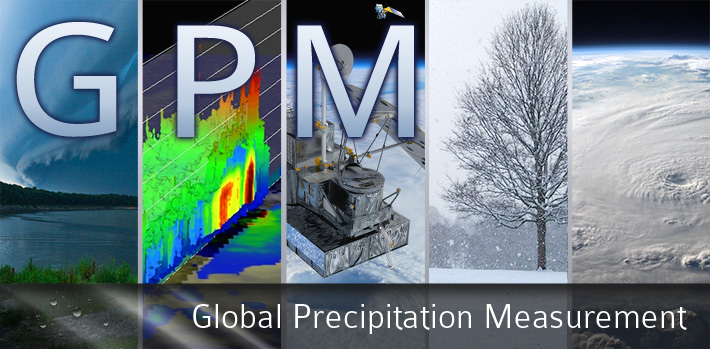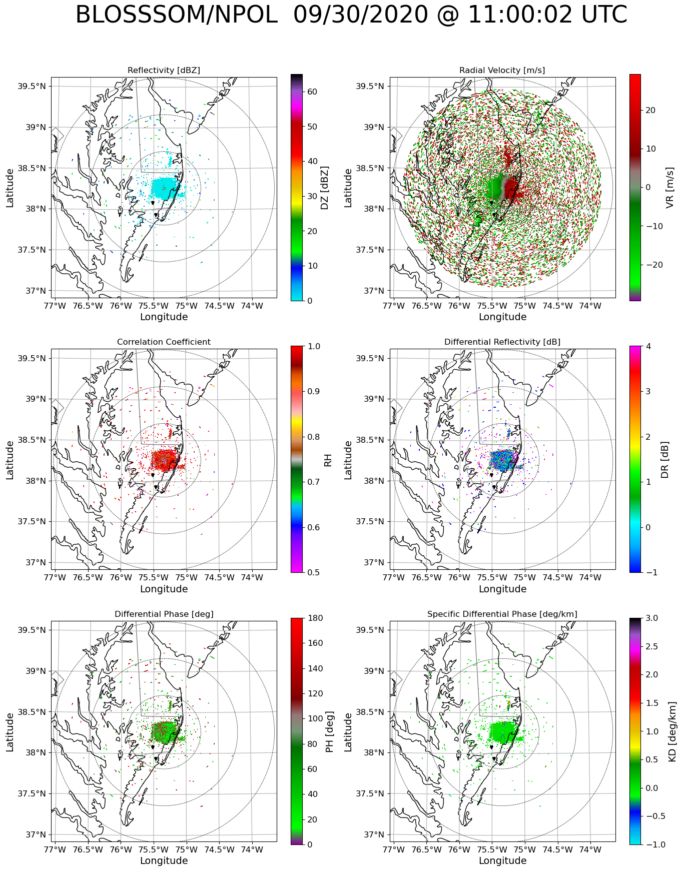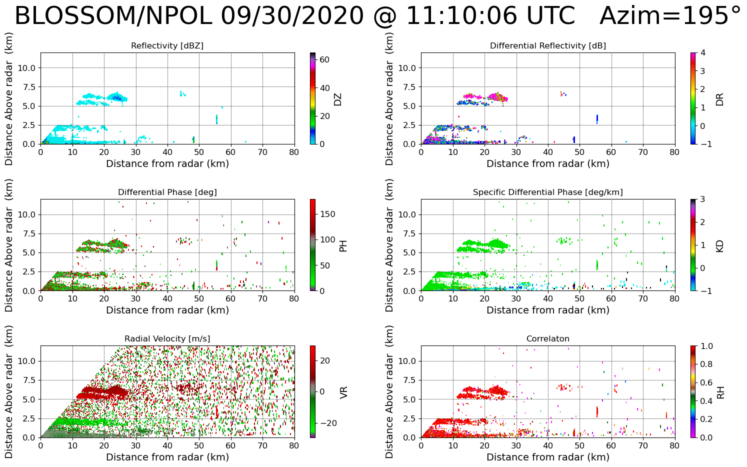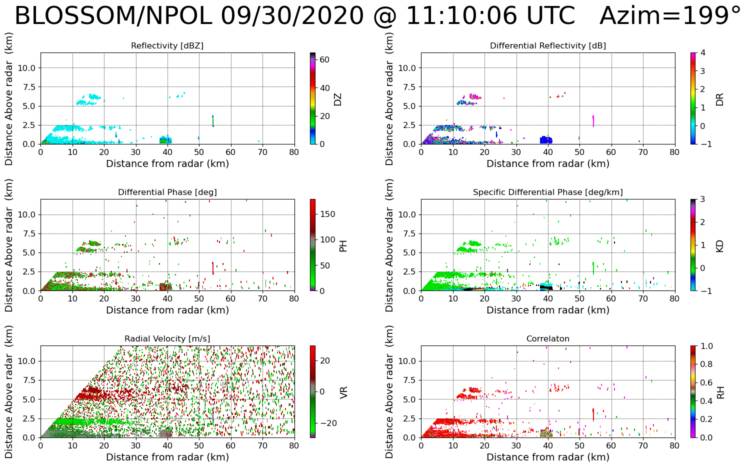BiLateral Operational Storm-Scale Observation and Modeling (BLOSSOM)
BiLateral Operational Storm-Scale Observation and Modeling (BLOSSOM)
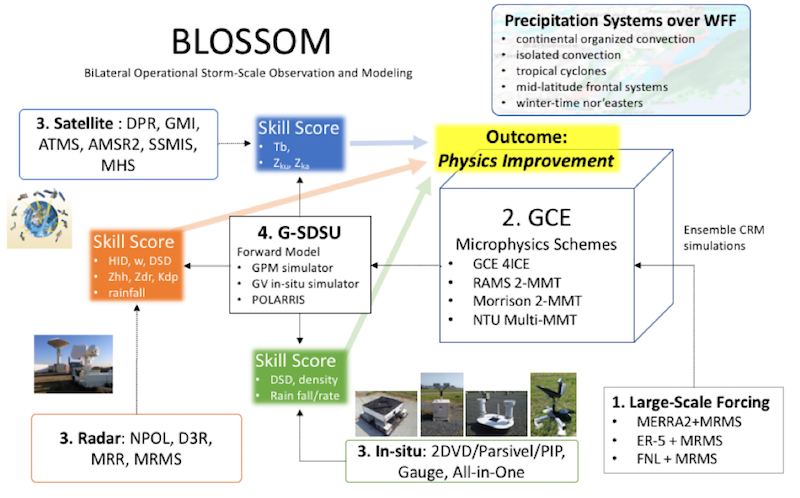
Over the past several decades, cloud-resolving models (CRMs) have been advanced
and utilized for many applications, such as the study of mesoscale convective
systems, cloud microphysics, cloud latent heating, and cloud radiative forcing,
all of which have been used to support the development of satellite algorithms
for the TRMM and GPM satellites (Tao et al. 2014). Yet, one of the long-standing
uncertainties in CRMs is the spatial-temporal distribution of bulk hydrometeors,
especially, mixed-phase and frozen precipitation.
BLOSSOM envisions the following goals:
-
Establish a long-term super site to improve understanding of
cloud-precipitation processes over the WFF site.
-
Provide routine storm-scale cloud-precipitation simulations as well as
storm-scale measurements using ground-based polarimetric Doppler radar and
in-situ data.
-
Provide routine meteorological forcing input to drive different CRM and
single-column models (SCMs) for improvement of cloud microphysics and
convection parameterization.
-
Collect PMM satellite data along with the CRM simulations and polarimetric
radar observation for generating value-added BLOSSOM Bundled Data (BBuD) for
the community.
|
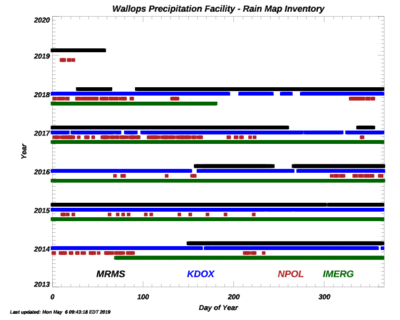
|
NASA Polarimetric Radar (NPOL)
NOTE:
Radar imagery on this page was generated using PyART
Helmus, J.J. and Collis, S.M., 2016. The Python ARM Radar Toolkit (Py-ART), a Library forWorking with Weather Radar Data in the Python Programming Language. Journal of Open Research Software, 4(1), p.e25. DOI: http://doi.org/10.5334/jors.119.
Latest NPOL Imagery
Latest NPOL Radar Animations
| Reflectivity [dBZ] | Radial Velocity [m/s] | Differential Reflectivity [dB] |
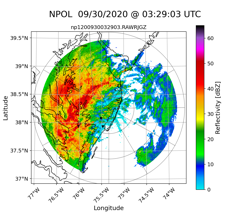
|
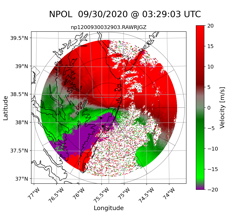
|
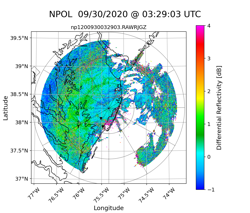
|
| Corellation | Differential Phase [deg] | Specific Differential Phase [deg/km] |
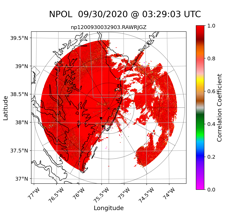
|
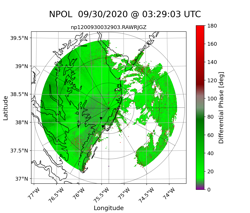
|
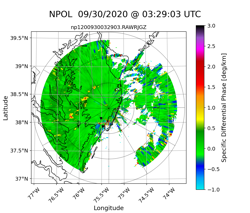
|
Click thumbnails to view animatewd gif!
Multi-Radar Multi-Sensor (MRMS) Data over Wallops Region
|
The
Multi-Radar Multi-Sensor (MRMS)
project utilizes an automated system that rapidly and intelligently
integrates data from multiple radars and radar networks, surface
observations, numerical weather prediction (NWP) models, and climatology
to generate seamless, high spatio-temporal resolution mosaics.
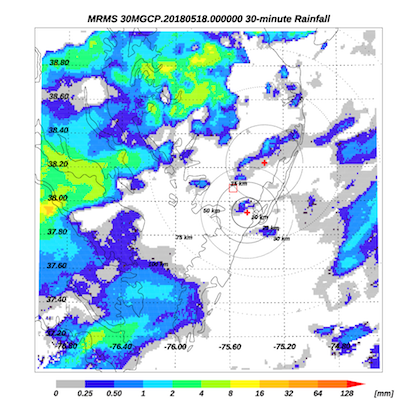
Sample 30-minute MRMS Map Over Wallops Region
|
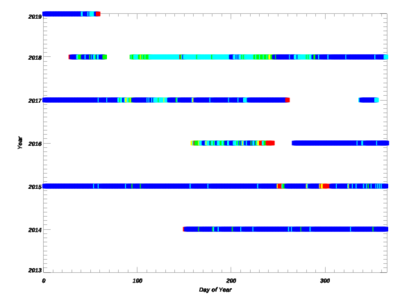 MRMS Inventory over Wallops Region
MRMS Inventory over Wallops Region
|
|
NPOL
is NASA's premier weather radar. It is one of only two mobile S-band
dual-polarization radars (the other being NCAR's SPOL). When not being
deployed for PMM/GPM field campaigns, it is operated near NASA's Wallops
Flight Facility in Newark, MD.
NPOL has a wavelength of 10.65 cm, an operating frequency of 2700-2900 MHz,
variable PRF of 500 and 1000 Hz with a 0.95 degree beam width. NPOL can
operate with both horizontal and vertical polarization in both
simultaneous and alternating modes. The radar has a prime-focus parabolic
reflector which is 8.5 m in diameter and is housed on five sea-tainers.
When readied for deployment, the entire radar and antenna system is stored
within the five seatainers.
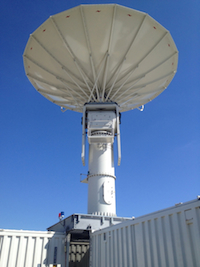
|
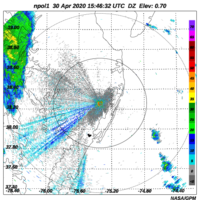
Latest NPOL image
|
|
 NPOL Inventory over Wallops Region
NPOL Inventory over Wallops Region
|
Dover AFB WSR-88D (NEXRAD)
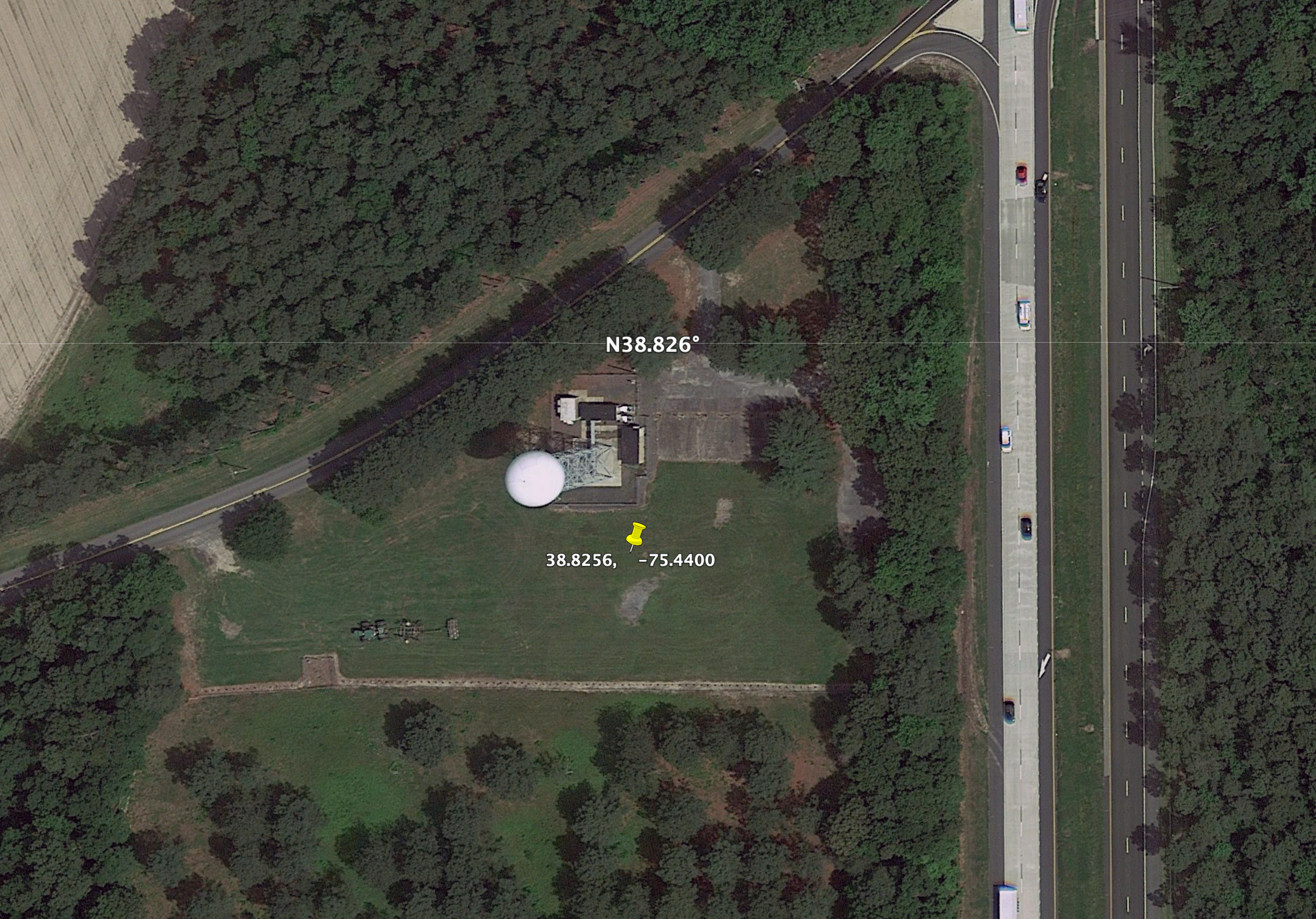
|
 KDOX Inventory over Wallops Region
KDOX Inventory over Wallops Region
|
NPOL Case Studies
Click here
to take a look at several initial case studies.
|
